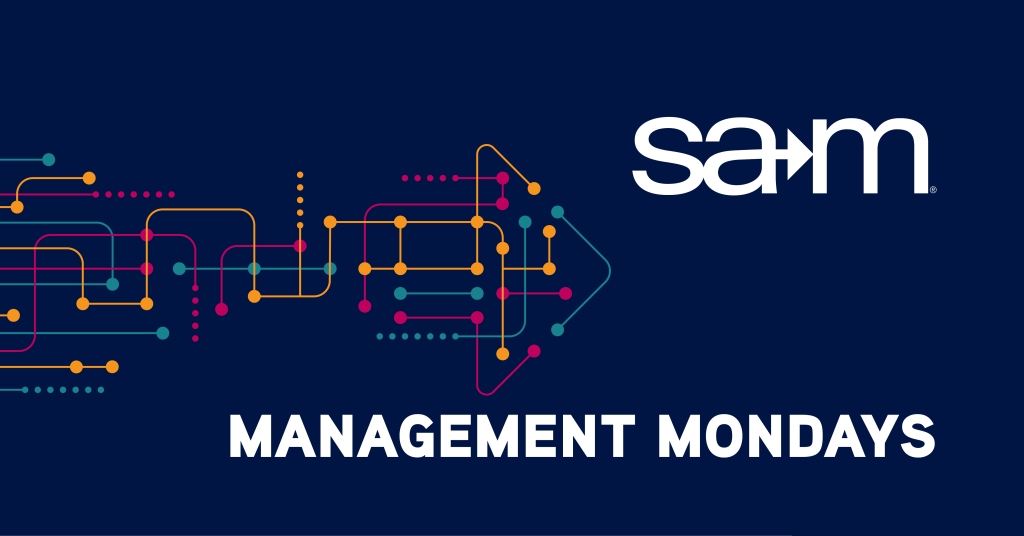
The cohesion and collaborative spirit within a team can foster camaraderie, enhance creativity, and improve performance. Building this level of unity can be challenging when team members operate from various locations. In the wake of recent remote work trends, organizations must innovate their team-building approach to reap the benefits and avoid the challenges of this environment.
Remote work comes with an array of benefits including enhanced flexibility and a diminished ecological footprint. However, employees working from home may experience feelings of isolation and encounter challenges in collaboration.
To help employees thrive in a remote team environment, we offer the following strategies designed to optimize collaborative efforts. The recommendations that follow can increase success in the remote workspace given an organization’s efficient and effective use of meetings. We cover this topic in another article, but suffice it to say, for any of these approaches to work, a healthy meeting culture must already be embedded in the organization. Otherwise, incorporating these approaches can be viewed as piling onto the stress and potential burnout many employees feel when they see another meeting on their schedule.
Casual Approaches to Enhance Connection in Remote Teams
In traditional office setups, casual interactions and discussions are commonplace, increasing the likelihood of developing healthy working relationships. Socializing in a remote setting can seem counterintuitive; meetings in remote space are task-related and socializing seems out of place or worse, an unproductive use of one’s time. Shifting this mindset is critical to Here are some substitute strategies to foster informal socializing in a remote environment:
Facilitate Relaxed Pre-Meeting Interactions
Encouraging casual conversations before the formal commencement of meetings can significantly elevate the team’s spirit and cultivate interpersonal relationships. By allowing team members to arrive early and share personal anecdotes, hobbies, or weekend plans, a relaxed and friendly atmosphere is nurtured. This strategy not only strengthens bonds but also enhances openness and mutual respect among team members, setting a positive tone for the subsequent discussions.
Organize Competitive Games
Introducing elements of friendly competition through various online games, cooking contests, and talent shows can serve as a catalyst for improving interpersonal relationships and team cohesion. These activities provide a platform for team members to interact, collaborate, and learn more about each other’s skills and interests, thereby encouraging a sense of unity and mutual appreciation within the team.
Host Virtual Gatherings
Organizing regular virtual celebrations and informal gatherings is essential for maintaining connections and building stronger relationships within remote teams. By surveying employees about their preferences in entertainment, organizations can tailor these gatherings to suit the interests of their team members, thereby promoting participation and interaction. These virtual events offer a valuable opportunity for team members to socialize and build rapport, contributing to a more inclusive and harmonious work environment.
Prioritize Health and Wellness
Addressing the sedentary nature of remote work is crucial for maintaining the well-being of team members. Organizing collective online wellness activities, such as exercise classes or stretching sessions, can bring team members together to participate in shared experiences. These initiatives not only promote healthier lifestyles but also contribute to building a sense of community and mutual support among team members.
Distribute Appreciation Tokens
Sending thoughtful gifts or appreciation tokens can convey gratitude and recognition, making team members feel valued and appreciated. Such gestures, whether they are gift cards to local coffee shops or branded company merchandise, can boost morale and strengthen the bond between the organization and its employees. Recognizing the contributions of different departments enhances overall team spirit and fosters a positive organizational culture.
Cultivate an Inclusive Environment
Promoting a work environment where diversity is embraced, and mutual respect is foundational is essential for the success of any team. By actively encouraging the expression of diverse viewpoints and empathizing with each other’s experiences, organizations can build a culture of inclusivity and acceptance. This atmosphere promotes mutual understanding and respect, leading to enhanced collaboration and teamwork.
Structured Strategies for Effective Remote Team Building
In the age of remote work, structured strategies are critical for establishing and maintaining a cohesive and effective team. This segment explores six key structured strategies essential for successful remote team building. Having a plan, establishing norms, aligning shared goals, showing the link between effort and outcomes, conducting and encouraging one-on-one meetings, and optimizing communication channels will build a high-performing remote team that is harmonious, collaborative, and aligned with the organization’s vision and goals.
Develop a Comprehensive Plan
Formulating a detailed, systematic team-building plan is vital for evaluating progress and ensuring objectives are met. A well-crafted plan with specific metrics and milestones provides a clear roadmap for team development and enables the organization to monitor the effectiveness of its team-building initiatives. By regularly assessing progress against the established plan, adjustments can be made to address emerging needs and challenges, thereby ensuring the ongoing development and cohesion of the team.
Establish Communication Norms
Collaboratively determining communication protocols and ground rules is crucial for ensuring smooth and effective interactions within remote teams. By engaging team members in the process of establishing norms for communications and resolving operational issues, a sense of shared responsibility and commitment is developed. Consensus on communication etiquette, such as timely response to messages and meeting participation, creates harmony and respect in the remote workspace and allows for higher levels of collaboration and success.
Align on Shared Objectives
The alignment of individual efforts towards common organizational goals is a fundamental aspect of transforming even disparate contributors into a cohesive team. By emphasizing the relevance of the organizational vision and mission to daily tasks, a sense of purpose and direction is instilled in team members. Regular discussions and assessments of understanding regarding organizational objectives ensure that the team is united in its pursuit and contributes to the realization of shared goals.
Demonstrate Impact
Enabling team members to visualize the impact of their efforts fosters a sense of accomplishment and motivation. Recognizing and rewarding high performance, as well as sharing success stories, contribute to creating a positive and inspiring work environment. Demonstrating the tangible outcomes of individual and collective contributions reinforces the value of teamwork and motivates team members to strive for excellence in their roles.
Conduct and Encourage One-on-One Meetings
Regular one-on-one meetings between supervisors, managers, and employees play a pivotal role in building stronger bonds and addressing individual needs and aspirations. These personalized interactions provide an opportunity to discuss project updates, career development plans, and any concerns or suggestions, fostering a sense of trust and mutual respect. Encouraging such meetings among coworkers can also enhance interpersonal relationships and facilitate better understanding and collaboration within the team.
Optimize Communication Channels
Experimenting with various communication platforms and tools is essential for determining the most effective means of interaction within remote teams. Allowing team members the freedom to explore different options, such as video calls, instant messaging, and dedicated communication channels, helps in finding the right mix that suits the team’s dynamics and preferences. By optimizing communication channels, the organization can ensure streamlined interactions that can increase the overall success of the team.
In conclusion, embracing the remote work environment calls for fresh, friendly ways to build teams. The ideas shared here offer a handy guide to create close-knit, inclusive, and respectful remote teams. Simple, relaxed strategies like virtual get-togethers, wellness activities, and appreciation gifts are key to making teammates feel valued and connected. Likewise, having clear plans, open communication, shared goals, and recognizing everyone’s impact are critical for keeping teams motivated and in sync with the organization’s vision.
Blending casual bonding activities with more structured strategies gives us a balanced, all-encompassing team-building toolkit. These strategies are our antidote to the isolation blues and our recipe for smooth teamwork in remote settings. By embracing these easy-to-adopt strategies, organizations can ensure their remote teams stay happy, connected, and productive, paving the way for collective success. So, let’s keep it proactive, adaptive, and intentional! By integrating these friendly and structured approaches, we can cultivate a learning-rich, growth-oriented, and united remote work culture. These approaches are our building blocks for developing resilient, diverse, and thriving teams in our modern work settings.
Are you looking to add tools to your management toolkit in managing difficult conversations like Terminations. Get a solid foundation on the basics by completing a SAM Course in Leadership and HR from our Certifications and Training programs. Click here to connect with your Leadership and HR training course. If you are a SAM Member, take advantage of our 20% off discount by getting your discount code in the Member Portal.

Written By,
Patrick Endicott
Patrick is the Executive Director of the Society for Advancement of Management, is driven by a deep commitment to innovation and sustainable business practices. With a rich background spanning over a decade in management, publications, and association leadership, Patrick has achieved notable success in launching and overseeing multiple organizations, earning acclaim for his forward-thinking guidance. Beyond his role in shaping the future of management, Patrick indulges his passion for theme parks and all things Star Wars in his downtime.
